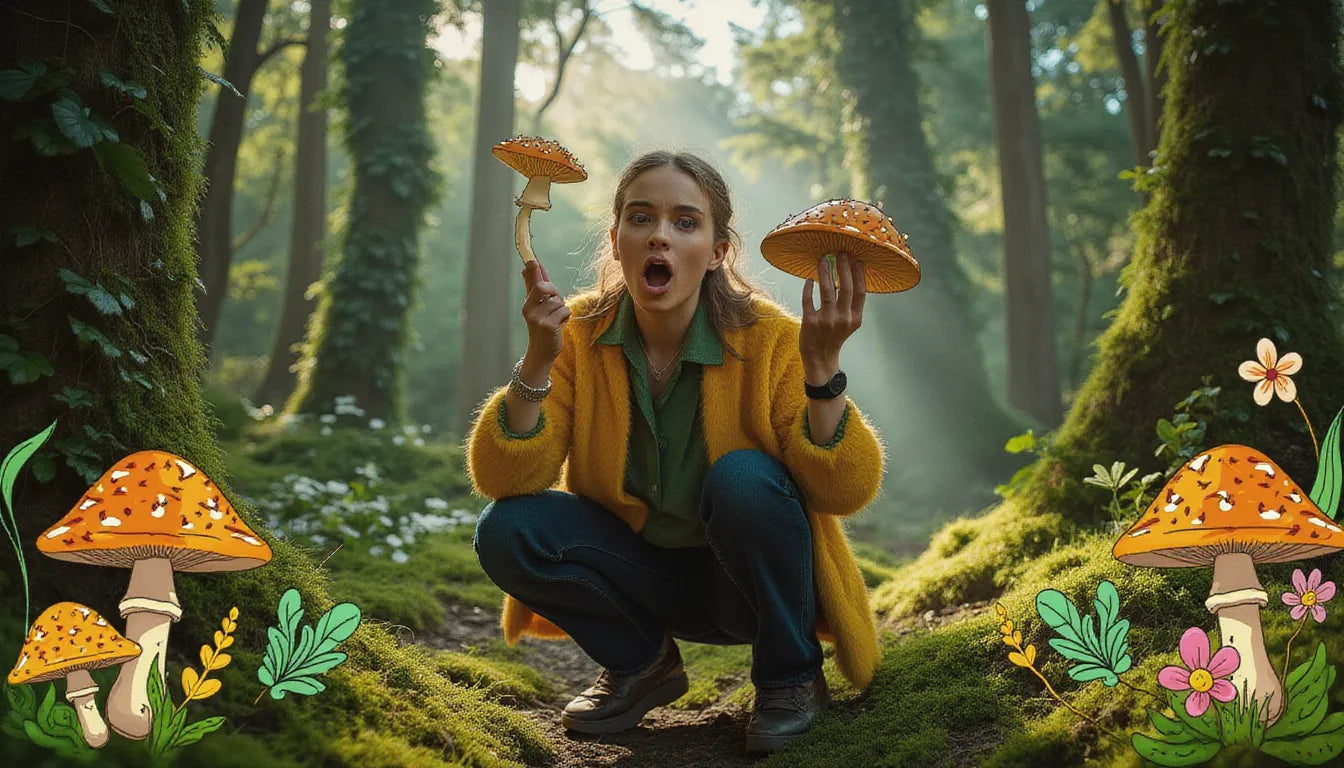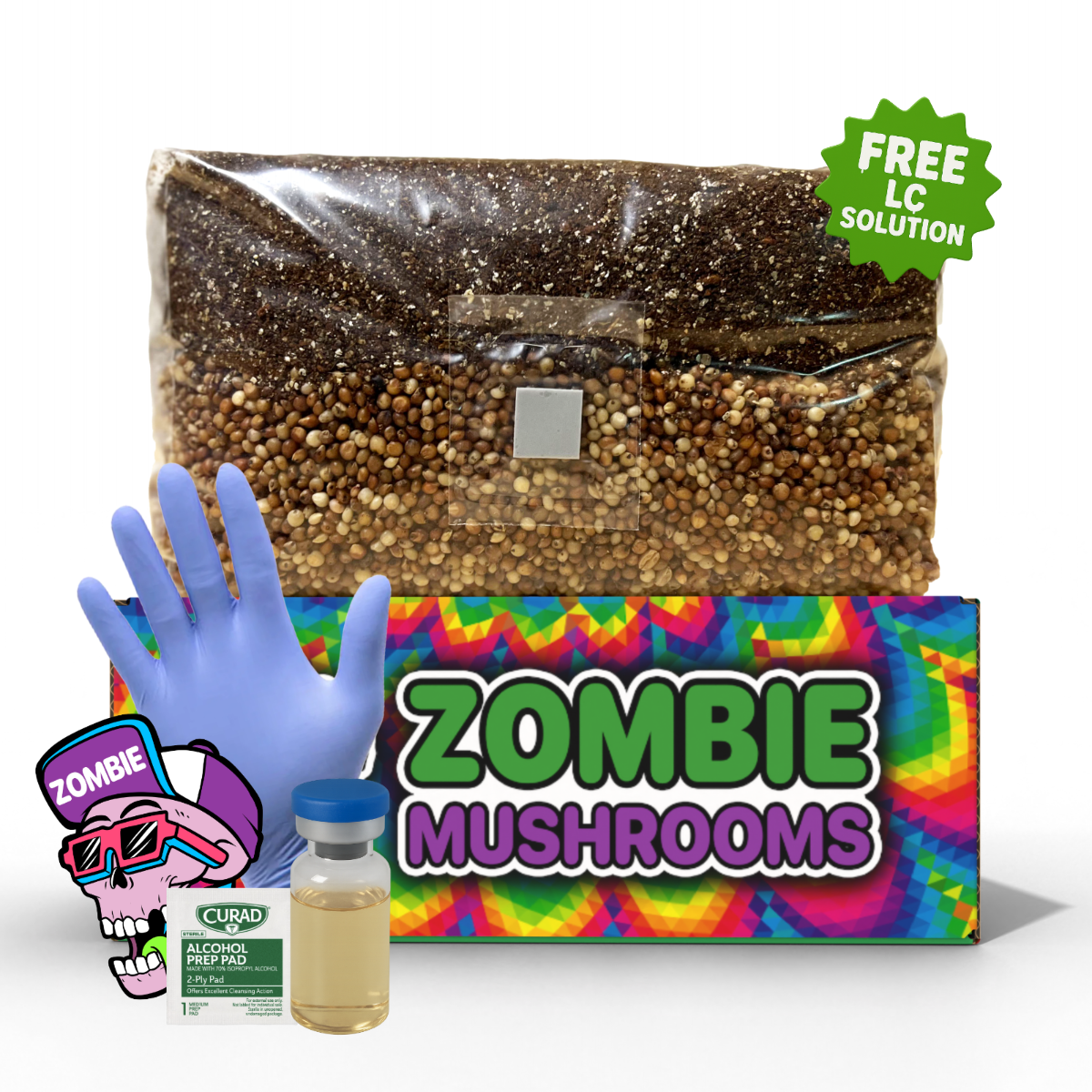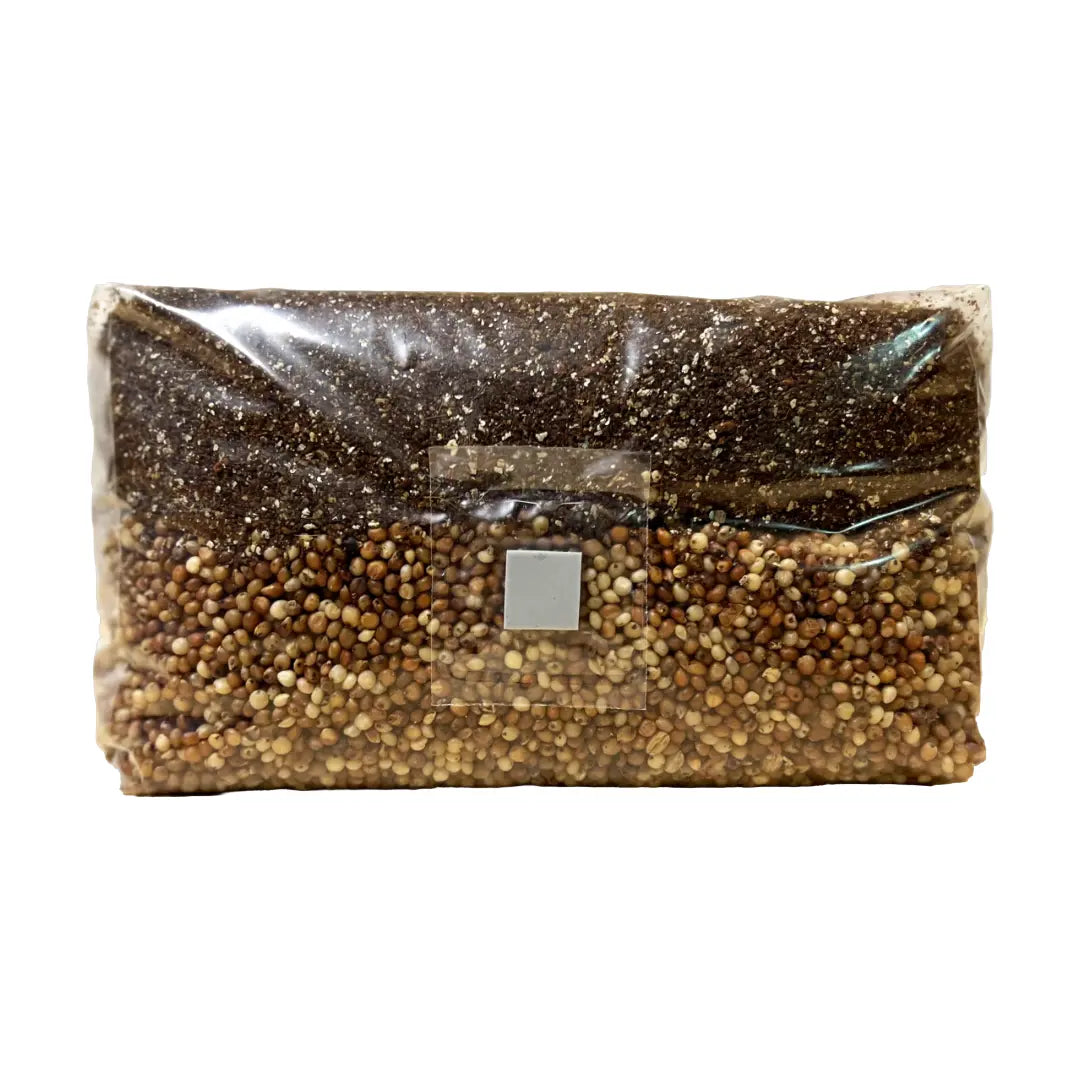⬇️ Prefer to listen instead? ⬇️

- Penny Bun mushrooms (Boletus edulis) form symbiotic relationships with trees, making them hard to grow commercially.
- Known for their rich umami and nutty flavor, Penny Buns are highly valued in gourmet cooking worldwide.
- Penny Buns are beginner-friendly, with few toxic lookalikes, making them a safe starting point for new foragers.
- Sustainable foraging practices help preserve forest ecosystems and mushroom populations.
- “Ceptember” marks the peak of Penny Bun season thanks to moist, cool conditions ideal for mushroom growth.
Foraging mushrooms is part treasure hunt, part therapy—a walk in the woods with the hope of finding nature’s culinary gold. Few discoveries thrill foragers more than stumbling across the much-loved Penny Bun mushroom. Sometimes elusive, always satisfying, the Penny Bun (Boletus edulis) is more than just edible—it's a rite of passage for both beginner and seasoned foragers alike. If foraging feels out of reach, mushroom grow bags offer a simple way to bring that same excitement into your home, giving you fresh mushrooms without the wait for a lucky find in the woods.

What is the Penny Bun (Boletus edulis)?
Commonly known as the Penny Bun, Boletus edulis is a prized edible mushroom found across the Northern Hemisphere, including Europe, Asia, and North America. Part of the bolete family, it differs from gilled mushrooms like chanterelles or shiitake by having a spongy underside composed of pores rather than gills. Its Latin name, translating simply to “edible mushroom,” shows how much people value it for cooking.
Regional names include:
- Porcini (Italy, from porcino or “little pig”)
- Cèpe (France)
- Steinpilz (Germany, meaning “stone mushroom”)
- Penny Bun (UK, due to its smooth brown cap resembling a bread roll)
Adult specimens typically feature a broad, convex, brown cap that ranges from 7–30 cm across, sitting atop a thick, sturdy stem that can grow 8–25 cm tall. The stalk is usually pale to white, sometimes netted with a fine reticulation. Underneath the cap is a spongy layer that begins white and changes to yellowish or olive as the mushroom matures.
Not only are Penny Buns delicious and nutritious, but they're also an important seasonal marker—an early sign of a healthy forest ecosystem.

Where and When Do Penny Buns Grow?
The Penny Bun mushroom is most commonly found in temperate forests throughout Europe, particularly thriving in mixed woodlands. This mushroom is mycorrhizal, meaning it forms symbiotic relationships with the roots of trees. It supplies the tree with essential nutrients and benefits from the sugars the tree produces—a win-win for both organisms.
Ideal environments for Penny Buns:
- Beech, pine, spruce, and fir forests
- Mossy, well-drained soil
- Areas with consistent rainfall followed by mild weather
Seasonal Patterns
Penny Buns flourish from:
- August to November in the UK and much of Europe
- Late summer to early fall in North America, varying by location
The nickname “Ceptember” among dedicated foragers refers to September’s abundance of Boletus edulis, when optimal moisture and temperature conditions trigger a significant fruiting event. Experienced mushroom hunters often plan annual outings during this window.
Pro tip for timing: A few days after steady rain followed by cooler nights is your best bet. Foragers seek days when the forest floor has just enough moisture to encourage fruiting, but it's not yet waterlogged or frozen.

Foraging Tips: How to Find Penny Buns
Finding your first Penny Bun is equal parts skill and luck. They hide well among dying leaves, twigs, and moss. Their subtle brown caps can easily masquerade as rocks or rotting wood.
Here are several proven tips for successful Boletus edulis foraging:
1. Know the Habitat
Walk slowly through coniferous or mixed forests with a history of mushroom growth. Look beneath older trees, especially near clearings or forest paths where light filters through.
2. Scan with Peripheral Vision
Focus less on individual objects and more on patterns of color and shape. Penny Buns often hide in plain sight when viewed from indirect perspectives.
3. Explore Slight Elevations
Small humps or mounds on the woodland floor often indicate expanding mycelium. These are hotspots where Penny Buns may pop up overnight.
4. Go Early
Competition can be fierce in popular mushrooming areas. Arrive early in the morning for undisturbed patches and fresher finds. Morning dew also makes it easier to spot mushrooms in the undergrowth.
5. Follow the Weather
Penny Buns thrive in conditions that are warm and wet. After several days of rain followed by cooler evenings, mushroom growth often explodes.
Foraging mushrooms safely is an acquired skill—but as with many things, time in the field is the greatest teacher.

How to Identify Penny Buns Safely
The good news for beginners is that Penny Buns are among the safest mushrooms to forage due to their distinctive features and lack of truly dangerous lookalikes. However, identification skills are vital if you're consuming wild fungi.
Key Identification Features
- Cap: Brown, smooth, slightly sticky when wet, like a crusty roll—hence “Penny Bun”
- Stem: Thick and white, possibly netted (fine white pattern)
- Underside: Pores (not gills) start pale, turning yellow with age
- Flesh: White, dense, does not change color when cut
- Smell: Mild, slightly nutty or sweet
Common Lookalike: Bitter Bolete (Tylopilus felleus)
While not toxic, the Bitter Bolete can deceive inexperienced foragers. It resembles Boletus edulis closely but has:
Always sample a tiny piece of any suspected Penny Bun—raw or lightly cooked. If it’s bitter, discard it; Boletus edulis has a subtle, pleasant flavor even when raw.
If you’re unsure, consult local mycological societies, apps, or mushroom field guides specific to your region.
Finding Your First Penny Bun
Ask any experienced forager—there’s nothing quite like finding your first Penny Bun. The moment feels special. After hours or even years of scouring forests, the sight of a thick white stalk rising from moss is unforgettable.
Often, it's a lesson in patience and presence. Novices frequently walk past them without recognition. The key skill is vision training—developing the ability to see subtle differences in forest textures and colors. Once spotted, your brain locks onto the shape, and future forays get easier.
This "mushroom vision" is a real phenomenon: neuropsychologists refer to it as “cognitive priming,” where repeated exposure tunes your brain into relevant patterns in your environment.

Penny Bun Clusters: Find One, Find Many
Nature rarely does things halfway. If you stumble upon one Penny Bun, pause and comb the immediate area. These mushrooms usually grow in loose colonies fed by the same spreading underground mycelium.
This is a perfect time to:
- Forage with a basket, not plastic (to let spores spread)
- Use a small knife for clean cuts at the stem base
- Resist taking every mushroom—leave some for wildlife and future growth
One mushroom often leads to five, then ten, then a basketful—it’s part of the thrill.

Culinary Uses: The Flavor of the Forest
There’s a reason Boletus edulis is so highly valued in cooking. Its meaty texture and complex, savory profile (rich in umami and nuttiness) make it a favorite among chefs and home cooks alike.
Cooking Methods
- Sautéed in butter with garlic—A classic, perfect on toast
- Fresh in pasta for a hearty autumnal dish
- Baked into pies, galettes, or savory wild mushroom quiches
- Grilled or roasted with herbs and olive oil
- Added to risotto, delivering depth and richness
- Infused in broths, stocks, soups—adds intensity
- Paired with truffle oil, sage, parsley, or caramelized onions
Penny Buns shine when gently cooked to preserve their texture and flavor—they don’t require complex preparation.

Preserving Penny Bun Mushrooms
You may find more than you can eat fresh. Luckily, Boletus edulis dries very well without losing flavor, making it easy to keep for winter meals.
Methods for Long-Term Storage
- Air dry slices on mesh racks or thread them into hanging strings in a dry room
- Use a dehydrator on low heat for consistent drying
- Store dried penny buns in airtight jars with desiccant
- Rehydrate in warm water or broth for stocks and stews
- Freeze sautéed mushrooms in olive oil or butter
Drying is by far the most traditional and flavor-saving method used in European kitchens for centuries.

Why Foragers Keep Coming Back for Penny Buns
Despite the simplicity of ingredients, the pursuit of a Penny Bun is an exercise in timeless joy. It combines sport, ecology, gastronomy, and meditation—nurturing your relationship with forests and food.
Every search hones:
- Your sensory awareness
- Your local ecological knowledge
- Your understanding of seasonality
This connection to the land and its seasons inspires stronger stewardship and awareness of sustainability—a byproduct most never anticipate.

Sharpening Your Foraging Skills Over Time
Mushroom foraging is a skill that builds with experience. The more time you spend in the woods, the better tuned your senses become. It’s not just about vision—smell, touch, and knowledge of terrain are equally important.
As your muscle memory sharpens, adaptation happens:
- You’ll walk slower and with intent
- You’ll recognize favorable tree species
- You’ll start “reading” the forest floor
Foraging becomes a full-bodied activity, marrying natural intuition with learned science.

Sustainable and Ethical Foraging
Harvesting wild mushrooms isn’t just about filling your basket—it’s also about protecting ecosystems.
Sustainability Guidelines
- Cut, don’t pluck—leave the underground mycelium intact
- Skip small specimens—allow them to mature and release spores
- Don’t over-harvest—share the bounty with wildlife, insects, and fellow foragers
- Observe local numbers—some regions restrict mushrooms labeled "near-threatened"
- Follow local foraging laws—check park and woodland harvesting policies
Acting as stewards of the land ensures foraging remains possible for future generations.

Can You Grow Your Own Penny Buns?
Unlike button or oyster mushrooms, Penny Buns form symbiotic relationships with tree roots, making home cultivation extremely difficult.
Why Growing is a Challenge
- They require living tree hosts like beech or pine
- Their underground mycelium takes years to establish
- Fruiting cycles are unreliable outside of natural conditions
That said, some companies have experimented with introducing spore-infused tree roots during reforestation projects, with mixed success.
If you’re interested in home cultivation, try well-known easy-grow kits (like those from Zombie Mushrooms) for oyster, lion’s mane, or shiitake mushrooms.
Making Memories Through Community Foraging
Mushroom hunting is more than a harvest—it’s a bonding experience. Sharing trails, discoveries, and recipes creates lasting connections among friends, families, and local foraging groups.
Many join community walks or mycology clubs to:
- Share local knowledge
- Swap spore prints and recipes
- Celebrate seasonal finds
- Educate new generations on sustainable practices
This intergenerational exchange keeps mushroom lore alive.
Is the Penny Bun Mushroom Worth Foraging?
Absolutely. You can easily find Penny Buns. They are great for cooking and make people happy when they find them. Whether you're a curious beginner or an expert forager, the pursuit of Boletus edulis is never wasted.
Tasting one is tasting the forest itself.
So the next time you find yourself walking through a damp September woodland, keep your eyes low and look around—you just might find a good mushroom beneath the leaves.
And if you want to grow mushrooms at home, check out Zombie Mushrooms’ grow kits—they are perfect for having mushrooms all year.



